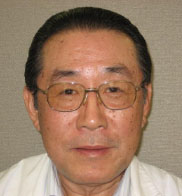EBUS-TBNA can identify the lesion to be biopsied, puncture the needle into the lesion, and biopsy
it all under live ultrasound visualization. In the contrary, in standard TBNA the lesion is identified
by CT scan and puncture site selected by using a lymph node map, using the relationship of the
lesion to the airway as a landmark and biopsy is taken under bronchoscopy visualization.
The success in TBNA relies on identifying the lesion and puncture site accurately, skill to
puncture the needle through the bronchial wall, and proper biopsy technique, and specimen
preparation and interpretation. Many attempts has been made to increase the diagnostic yield
in standard TBNA. ROSE and EBUS stand out most. ROSE does not identify the lesion or
determine the puncture site, but confirms the result forcing more attempts of punctures thus
increasing the diagnostic yield. In EBUS it identifies the lesion, selects the puncture site, and
biopsy actions are all done under visualization which is effective and satisfying, it is enjoyable
to do, and the operator can easily be addicted to it. In comparison to the standard TBNA it has
become a more attractive and preferred TBNA technique by some.
Objective clarification for the rules of this new technique is still needed. Is it more effective?
Its value might go beyond the diagnostic yield. Is it easier to learn and use? Does it accelerate the
learning curve of standard TBNA? Anatomy and technique with both EBUS-TBNA and standard
TBNA are the same. Visualization may or may not be the most important factor.
EBUS-TBNA is an exciting technology and has refocused our attention to the TBNA. We
should increase the effort to improve quality and availability of standard and EBUS-TBNA
training, followed by comparative studies. This manuscript “Endobronchial ultrasound-guided
transbronchial needle aspiration of lesions in mediastinum” by Jens Eckardt (
1), is excellent.
His diagnostic yield is more in tune with the average and realistic. Surgeons are uniquely more
qualified to the EBUS-TBNA in the OR under general anesthesia. As a pulmonologist dependency
on EBUS is a sign of weakness in standard TBNA. Using general anesthesia is a compensation of
bronchoscopy skill.
In the future we will likely be required to justify the cost of TBNA and to provide the best value
to the patient and healthcare system for procedures like TBNA. Nothing can replace the training
and the skill. Standard TBNA does have the competitive edge to EBUS-TBNA (
2).



